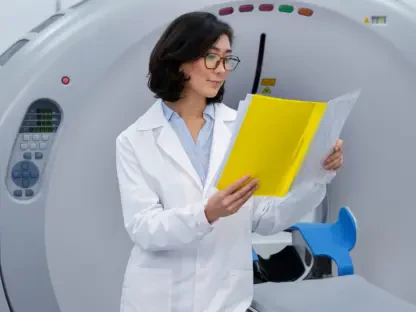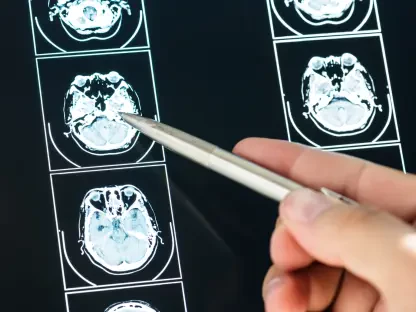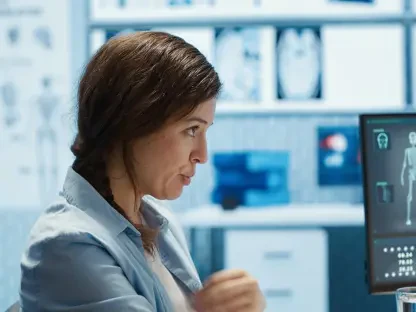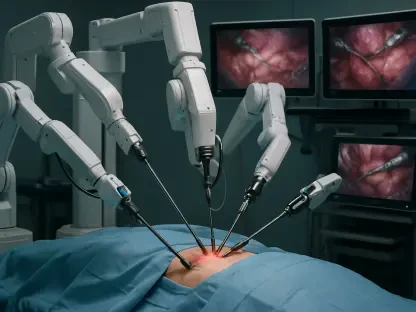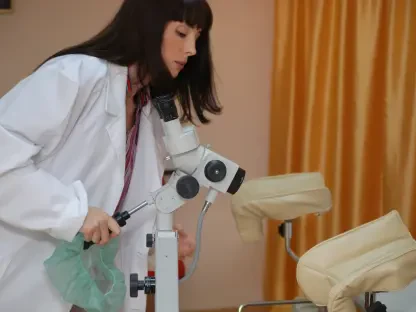The human eye has often been regarded as a portal to deeper insights about overall health, but recent technological strides are elevating this notion to an unprecedented level with remarkable implications for medical diagnostics. Retinal fundus imaging, a method long used to diagnose eye conditions, is now being recognized as a groundbreaking, non-invasive approach to evaluating brain health. Cutting-edge research is delving into how the retina’s intricate web of blood vessels can mirror neurological states, offering a novel lens through which to detect conditions such as dementia or other cognitive impairments. This convergence of ophthalmology and neurology is generating significant interest for its potential to transform early diagnosis, making it possible to identify risks before symptoms even surface. Imagine a world where a simple eye exam during a routine check-up could alert clinicians to looming brain health issues, paving the way for timely interventions. This promise of retinal imaging is not just a distant dream but a tangible innovation that could redefine preventive healthcare.
The Retina-Brain Connection
Unveiling a Hidden LinkA profound relationship exists between the retina and the brain, rooted in the shared characteristics of their vascular and neural networks, which are now under intense scientific scrutiny. The retina, packed with tiny blood vessels, often reflects systemic health changes, particularly those tied to cardiovascular and neurological functions. Studies are increasingly suggesting that subtle shifts in the retina’s structure may serve as early warning signs for serious brain conditions, such as Alzheimer’s disease or other forms of cognitive decline. This connection is particularly compelling because it offers a glimpse into brain health without the need for invasive tests, which can be costly and distressing for patients. By focusing on this link, researchers are uncovering how eye health assessments might play a pivotal role in broader medical diagnostics, potentially catching issues long before traditional symptoms become evident to patients or their families.
Decoding Structural CluesDelving deeper into this relationship, specific retinal changes—such as the thinning of the retinal nerve fiber layer or irregular blood vessel patterns—are being identified as potential indicators of neurological deterioration. Advanced imaging technologies can capture these minute alterations with striking clarity, providing a non-invasive snapshot of what might be happening in the brain. Unlike traditional diagnostic methods that often require complex procedures, retinal imaging stands out for its simplicity and accessibility, making it a promising tool for widespread use. This approach not only reduces patient discomfort but also allows clinicians to monitor changes over time with relative ease. As research progresses, these structural markers could become standardized benchmarks for assessing brain health risks, offering a clearer path to early intervention and management of debilitating conditions that affect millions globally.
Technology and Innovation in Diagnostics
Leveraging AI for Enhanced AccuracyCentral to the advancement of retinal imaging as a diagnostic tool is the integration of artificial intelligence (AI), which is revolutionizing how medical images are interpreted with unprecedented precision. Sophisticated algorithms are now capable of analyzing high-resolution retinal scans to detect subtle anomalies that might be overlooked by even the most trained human eye. This technological leap significantly enhances the reliability of brain health assessments, ensuring that even the smallest signs of trouble are not missed. Furthermore, AI-driven analysis can process vast amounts of data quickly, making it feasible to implement this method in busy clinical environments. As these systems continue to evolve, they hold the potential to standardize diagnostic criteria across diverse healthcare settings, ensuring consistency and accuracy in identifying neurological risks through the retina.
Integrating Clinical Insights for Comprehensive CareBeyond the power of imaging technology, the true strength of retinal diagnostics lies in its ability to combine visual data with detailed clinical information for a more rounded approach to patient care. By incorporating factors such as a patient’s medical history and reported neurological symptoms alongside retinal findings, healthcare providers can develop a more nuanced understanding of individual health risks. This comprehensive strategy enables the identification of patterns that might indicate specific conditions, facilitating personalized treatment plans tailored to each patient’s unique needs. Such an approach aligns with the growing emphasis on precision medicine, where interventions are customized based on detailed personal data. As this methodology gains traction, it could redefine how brain health is monitored, shifting the focus from reactive treatments to proactive, individualized care that prioritizes early detection and prevention.
Applications and Impact
Addressing Critical Needs in Specialized FieldsOne of the most striking applications of retinal imaging emerges in high-risk environments like military medicine, where the need for rapid, reliable diagnostics is often a matter of urgency. Service members, frequently exposed to risks such as traumatic brain injuries, stand to benefit immensely from a non-invasive method that can quickly assess brain health in the field. Retinal imaging offers a practical solution, delivering immediate insights without the need for complex equipment or lengthy procedures, which are often impractical in such settings. This capability could ensure that potential issues are identified and addressed promptly, potentially saving lives and improving long-term outcomes for those who serve. The relevance of this technology in specialized contexts underscores its versatility and the urgent demand for innovative health solutions tailored to unique challenges faced by specific populations.
Transforming Public Health PerspectivesLooking toward broader societal impacts, retinal imaging has the potential to become an integral part of routine health screenings, fundamentally altering how preventive care is approached on a global scale. By raising awareness of the critical connection between eye and brain health, this technology could encourage individuals to view regular eye exams as essential components of overall wellness checks, rather than mere vision assessments. Such a cultural shift could foster a proactive mindset, where early detection of neurological conditions becomes a standard expectation rather than a rare occurrence. If integrated into public health initiatives, this method might significantly reduce the burden of late-stage diagnoses, improving quality of life and reducing healthcare costs. The ripple effect of this change could be profound, promoting a future where prevention is prioritized, and health disparities are addressed through accessible, innovative tools.
Pioneering a Healthier Tomorrow
Reflecting on the strides made in retinal imaging, it becomes evident that this technology marks a turning point in non-invasive diagnostics with its ability to reveal brain health insights through the eye. The correlation between retinal changes and neurological conditions has been meticulously explored, demonstrating a viable path for early detection that was once unimaginable. The fusion of AI with clinical data has elevated diagnostic precision, while applications in critical areas like military medicine showcase the adaptability of this approach to pressing needs. As validation efforts progress, the groundwork is being laid for standardized protocols that promise reliability across varied settings. Moving forward, the focus should shift to integrating this tool into everyday healthcare practices, ensuring that routine screenings capture its full potential. Continued collaboration across medical and technological fields will be essential to refine its capabilities, ultimately shaping a landscape where early intervention through retinal imaging becomes a cornerstone of global health strategies.




